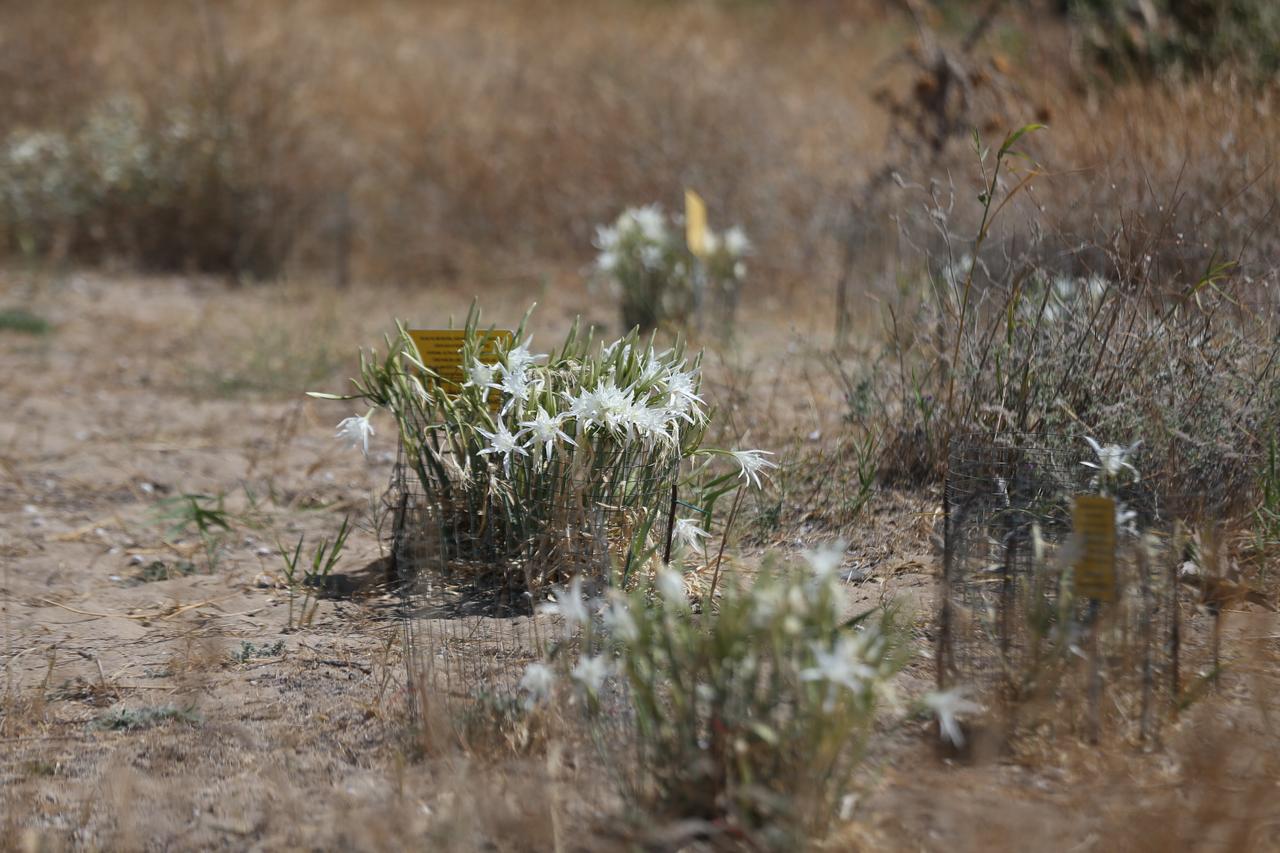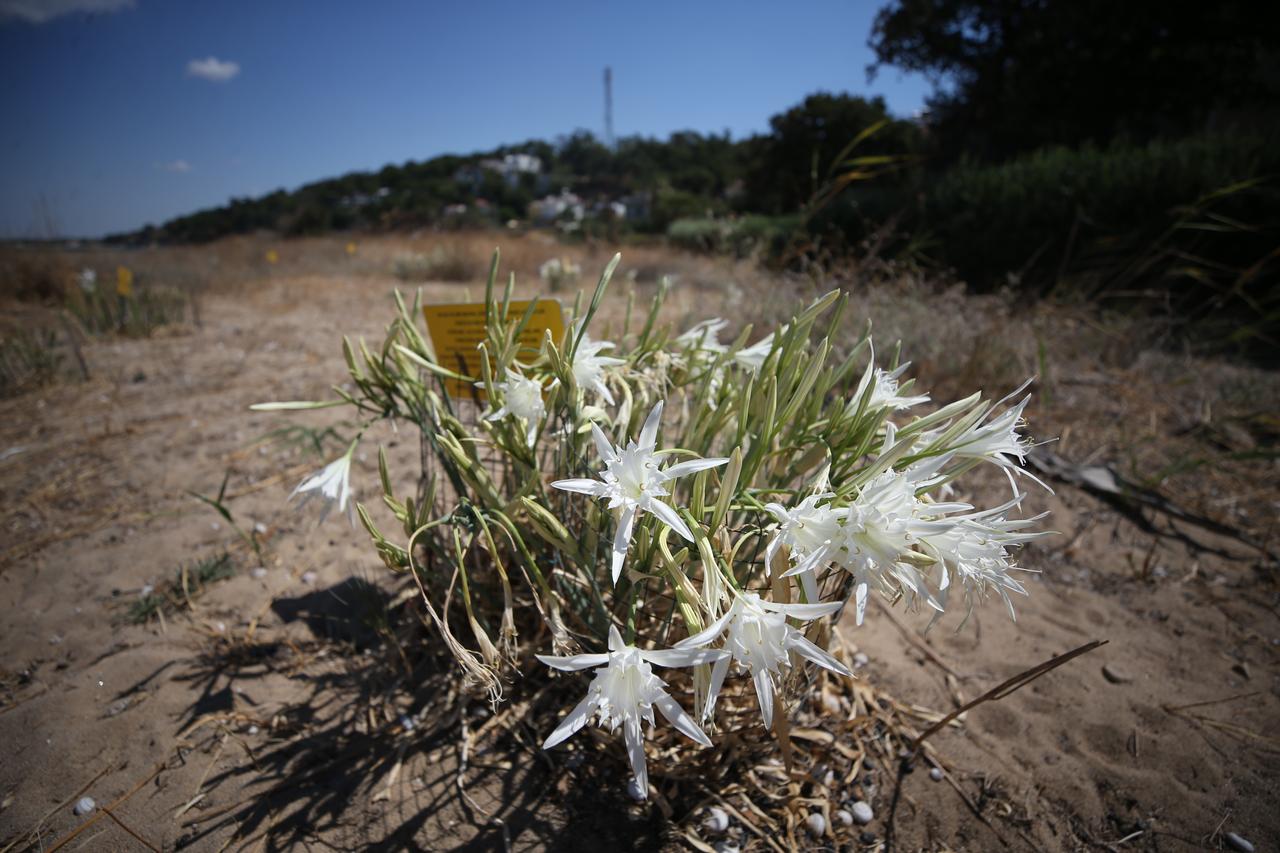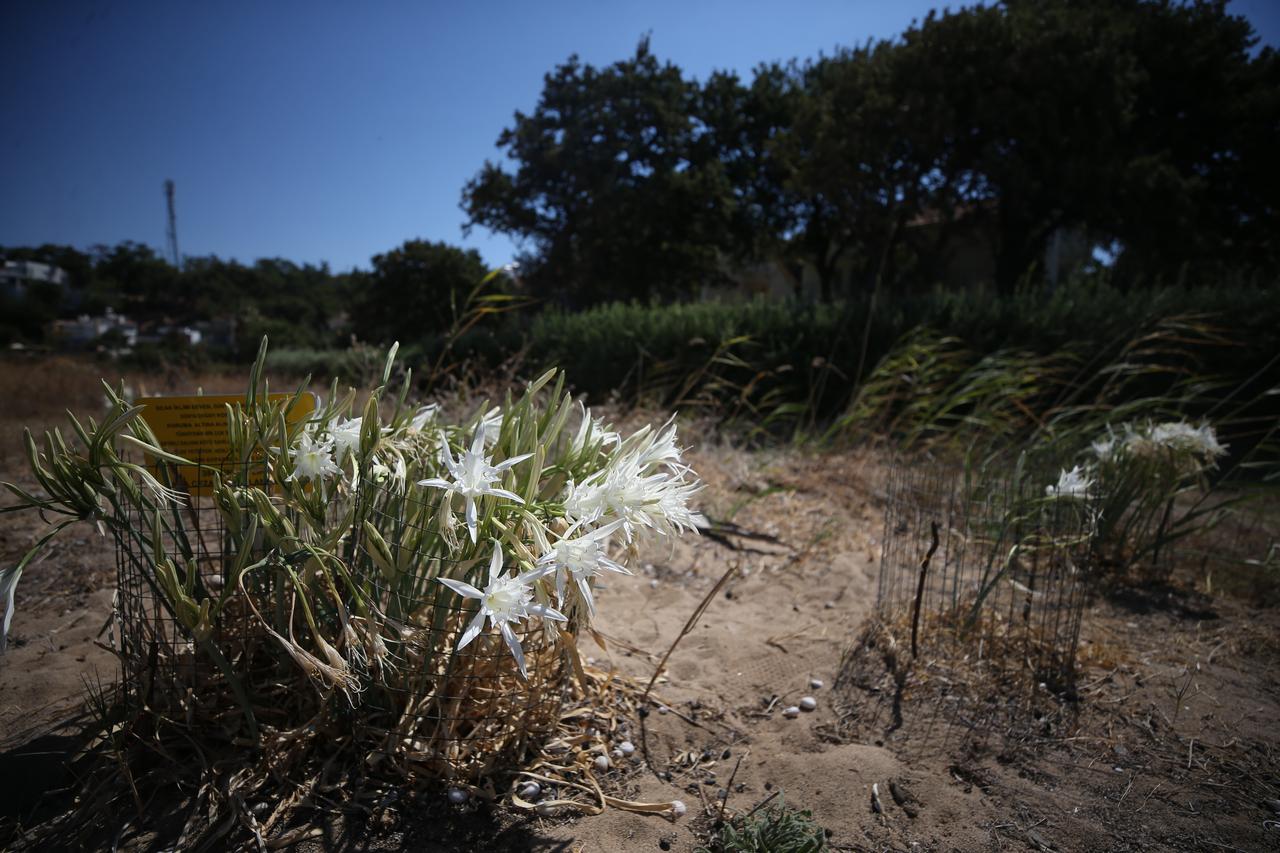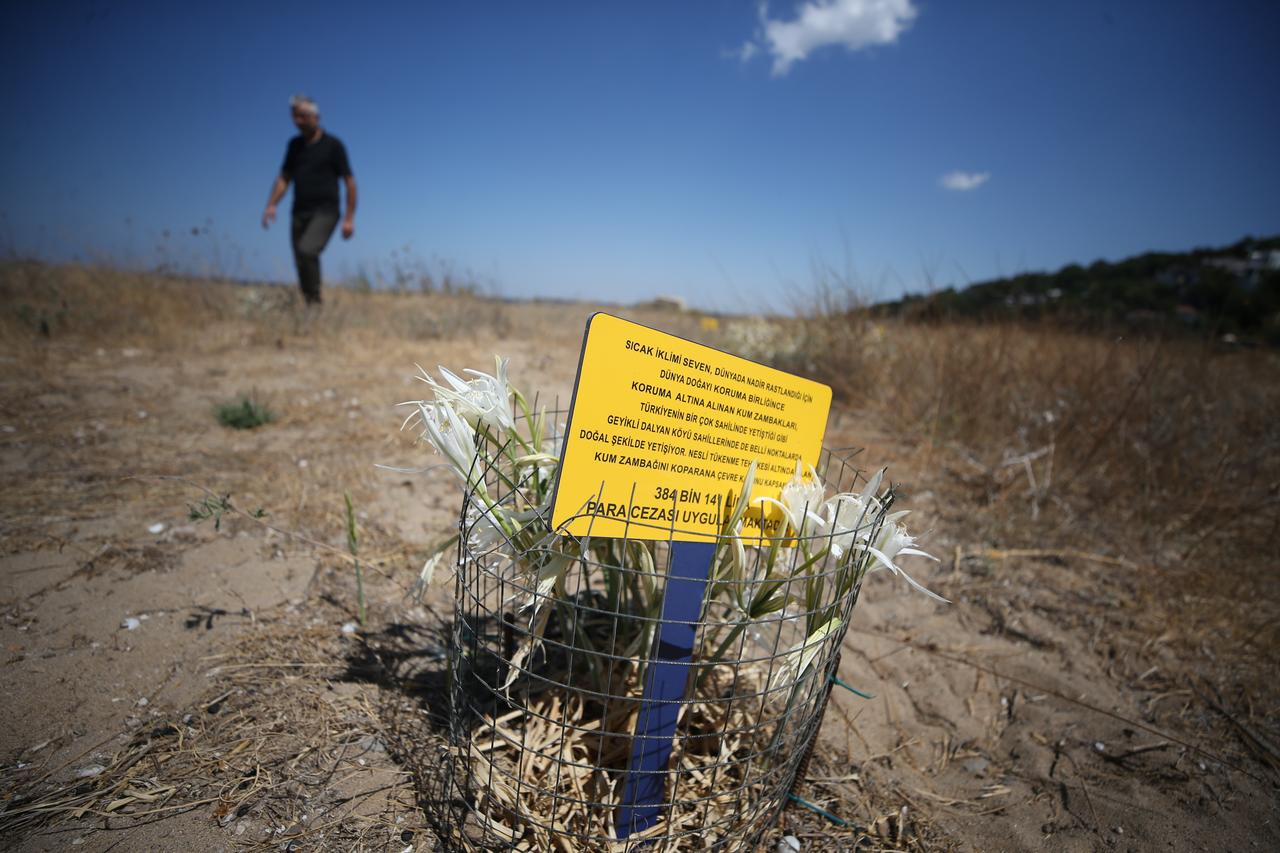
The coastline around Alexandria Troas, an ancient city in Türkiye’s northwestern province of Canakkale, is currently dotted with blooming white sand lilies, a delicate plant that has long inspired myths and legends.
Locals in Dalyan village, where the ancient harbor of Alexandria Troas is located, have taken steps to protect these flowers by fencing off certain areas and installing information boards to raise awareness among visitors.

Known in Greek mythology, sand lilies blossom between August and October, bringing bright white petals and a sweet fragrance to the seashore.
Their beauty, however, makes them vulnerable, as people are often tempted to pick them. To discourage such damage, Türkiye’s environmental regulations impose a fine of ₺557,212 (approximately $18,000) on anyone caught uprooting or collecting the flowers.

Professor Erhan Oztepe, head of excavations at Alexandria Troas, said that archaeological sites are valued not only for their historical remains but also for their natural setting. He emphasized that Dalyan villagers are highly conscious of the plant’s importance.
“Anatolia is not only rich in archaeology but also in botany. Just as we protect cultural heritage, we must preserve its natural landscape. These endemic species must not be destroyed,” he explained.

Onur Sinan Turkmen, a faculty member at Canakkale Onsekiz Mart University and president of the local Chamber of Agricultural Engineers, noted that sand lilies are becoming less common as their coastal habitats disappear. He explained that the International Union for Conservation of Nature (IUCN) has already listed the plant for protection. Found across Mediterranean countries, the species grows along sandy coasts in Türkiye’s Mediterranean, Aegean, Marmara, and Black Sea regions.
Turkmen highlighted the plant’s ecological value, pointing out that it tolerates salt, requires very little water, and thrives in sandy environments. He stressed that these qualities may prove vital in the future, especially as climate change and water scarcity put increasing pressure on agriculture. “One day we may need to rely on the genetic resources of plants like these,” he said.

According to Turkmen, sand lilies most often flourish in areas where humans interfere less with the sea, such as remote beaches or archaeological sites.
He explained that the flowers typically bloom in late summer, peaking in August and September but sometimes lasting into October, adding a fragile layer of natural beauty to Türkiye’s ancient coastal landscapes.